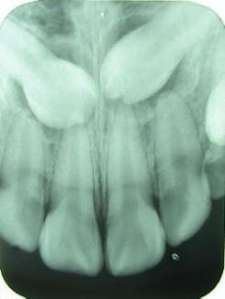By Marisa Sanchez, Molecular and Cellular Biology, ‘15
One feature that sets humans apart from other primates is the thickness of tooth enamel. Scientists at Duke University have recently discovered evidence on how evolution has resulted in thickened enamel for human teeth. By comparing the human genome to five other primate species, geneticists and evolutionary anthropologists were able to identify two segments of DNA where natural selection may have played a role in giving rise to thick enamel. Differences in enamel thickness have been linked to the difference in diet among primates. Humans consume foods that are tougher to chew relative to the food eaten by other primates, which is why humans have developed thicker enamel through natural selection.

By Baihokkhi kakkhi
Wikimedia Commons
Scientists looked at four genes that have a known role in tooth development, making these good candidates for seeing evidence of positive selection, but not necessarily good candidates for seeing all genes involved in tooth evolution. They then looked at where base pair changes occurred between species, and then among those they looked at which ones occurred at an accelerated rate indicating positive selection. This analysis confirmed that the gene MMP20, already known to influence enamel thickness, was under positive selection as well as a recently discovered gene ENAM. They also found that the changes due to positive selection were in the regulatory regions of the DNA and not protein-coding regions as originally predicted.
Read more:
Julie E. Horvath, Gowri L. Ramachandran, Olivier Fedrigo, William J. Nielsen, Courtney C. Babbitt, Elizabeth M. St. Clair, Lisa W. Pfefferle, Jukka Jernvall, Gregory A. Wray, Christine E. Wall. Genetic comparisons yield insight into the evolution of enamel thickness during human evolution. Journal of Human Evolution, 2014; DOI: 10.1016/j.jhevol.2014.01.005